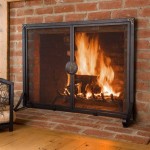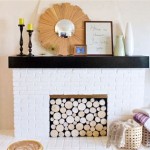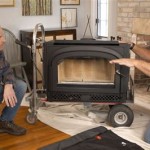Here's an article focusing on corner natural gas fireplaces, designed to meet your specified requirements:
Corner Natural Gas Fireplaces: An Efficient and Aesthetic Heating Solution
Corner natural gas fireplaces represent a compelling fusion of functionality and design, offering a practical heating solution that simultaneously enhances the visual appeal of a living space. Unlike traditional fireplaces that require significant structural modifications and can be inefficient in terms of heat distribution, corner units are specifically designed to fit into the often-underutilized corner areas of a room. This strategic placement optimizes space utilization while providing a focal point that integrates seamlessly with various interior design styles.
The growing popularity of corner natural gas fireplaces stems from their ease of installation, energy efficiency, and aesthetic versatility. They offer a viable alternative to wood-burning fireplaces, eliminating the need for wood storage and the associated mess. Furthermore, natural gas is a cleaner-burning fuel source compared to wood, contributing to reduced air pollution and a healthier indoor environment.
This article explores the various aspects of corner natural gas fireplaces, delving into their advantages, design considerations, installation processes, safety features, and maintenance requirements. Understanding these elements is crucial for homeowners and builders seeking to incorporate this efficient and visually appealing heating solution into their properties.
Space Optimization and Design Flexibility
One of the primary benefits of corner natural gas fireplaces is their ability to maximize space utilization. Traditional fireplaces typically require a dedicated wall, which can limit furniture placement and room layout options. Corner units, on the other hand, are designed to fit neatly into a corner, freeing up valuable wall space for other purposes. This is particularly advantageous in smaller rooms or open-concept living areas where space is at a premium.
Furthermore, corner fireplaces offer a high degree of design flexibility. They are available in a wide range of styles, from traditional and rustic to modern and contemporary, allowing homeowners to choose a unit that complements their existing décor. The facing materials can also be customized to match the room's color scheme and architectural style. Options include brick, stone, tile, and metal, providing virtually limitless design possibilities. Many manufacturers offer customizable log sets and flame patterns, further enhancing the visual appeal and creating a realistic fireplace experience.
The placement of a corner fireplace also allows for unique design opportunities. The angled orientation can create a natural focal point that draws the eye and adds visual interest to the room. Some homeowners choose to accentuate the fireplace with decorative elements such as mantels, shelves, or artwork, further enhancing its aesthetic appeal. Strategically placed lighting can also highlight the fireplace and create a warm and inviting ambiance.
Efficiency and Environmental Considerations
Natural gas fireplaces are generally more energy-efficient than traditional wood-burning fireplaces. Modern units are designed with advanced combustion technology that maximizes heat output while minimizing fuel consumption. Many models feature thermostatic controls that allow homeowners to regulate the temperature and maintain a consistent level of warmth. This not only enhances comfort but also reduces energy costs.
In addition to their energy efficiency, natural gas fireplaces are also a more environmentally friendly heating option compared to wood-burning fireplaces. Natural gas is a relatively clean-burning fuel source, producing significantly fewer emissions of particulate matter and greenhouse gases. This can help to improve air quality and reduce the overall environmental impact of home heating. Furthermore, natural gas is a readily available and reliable fuel source, reducing the reliance on other less sustainable energy sources.
Some natural gas fireplaces are also equipped with features that further enhance their efficiency and environmental performance. These include sealed combustion systems that draw combustion air from outside the home, preventing drafts and improving indoor air quality. Intermittent pilot ignition (IPI) systems eliminate the need for a continuously burning pilot light, saving energy and reducing gas consumption. These features contribute to a more sustainable and cost-effective heating solution.
Installation and Safety Protocols
The installation of a corner natural gas fireplace requires careful planning and adherence to safety regulations. It is essential to hire a qualified and licensed technician to ensure that the installation is performed correctly and safely. The installation process typically involves running a gas line to the fireplace location, venting the exhaust gases outside the home, and connecting the fireplace to the gas supply. The technician will also ensure that the fireplace is properly grounded and that all safety features are functioning correctly.
Venting is a critical aspect of natural gas fireplace installation. There are two main types of venting systems: direct vent and B-vent. Direct vent systems draw combustion air from outside the home and vent exhaust gases directly outside, eliminating the need for a chimney. B-vent systems, on the other hand, require a chimney and are designed to vent exhaust gases upwards. The choice of venting system depends on the specific fireplace model and the existing structure of the home.
Safety is paramount when installing and operating a natural gas fireplace. All units should be equipped with safety features such as a flame sensor that automatically shuts off the gas supply if the flame is extinguished. Carbon monoxide detectors should be installed in the vicinity of the fireplace to provide early warning of any potential leaks. Regular maintenance, including cleaning the burner and inspecting the venting system, is essential to ensure safe and reliable operation.
Local building codes and regulations should always be consulted prior to installing a natural gas fireplace. These codes may specify requirements for venting, clearances to combustible materials, and other safety measures. Compliance with these regulations is essential to ensure the safety of the occupants and to avoid potential legal issues.
Ongoing maintenance is crucial to ensure the longevity and safety of a corner natural gas fireplace. The frequency of maintenance will vary depending on the model and usage, but generally, an annual inspection by a qualified technician is recommended. This inspection should include cleaning the burner, checking the venting system, and testing the safety features. Homeowners should also regularly clean the glass front of the fireplace to maintain visibility and prevent the build-up of soot and other deposits.
Proper operation is equally important. Users should familiarize themselves with the fireplace's operating manual and follow the manufacturer's instructions for lighting, adjusting the flame, and shutting down the unit. Never attempt to modify or repair the fireplace yourself, as this can be dangerous and may void the warranty. If any problems are suspected, contact a qualified technician for assistance.
Furthermore, homeowners should be aware of the potential hazards associated with natural gas, such as leaks and carbon monoxide poisoning. If a gas leak is suspected, immediately evacuate the premises and contact the gas company. Carbon monoxide is a colorless and odorless gas that can be deadly. Symptoms of carbon monoxide poisoning include headache, dizziness, nausea, and fatigue. If any of these symptoms are experienced, seek medical attention immediately.
By adhering to these safety protocols, homeowners can enjoy the warmth and ambiance of a corner natural gas fireplace without compromising their safety or the safety of their families.

Corner Ventless Gas Fireplace Visualhunt

Lx2 3 Sided Corner Gas Fireplace Natural The Center

Chicago Corner 40re Designer Gas Fireplace Regency

Corner Ventless Gas Fireplace Visualhunt

The Corner Gas Fireplace A Great Way To Maximize Your Space

Corner Series Direct Vent Gas Fireplace By Majestic S Fireplaces

Hearth Home Technologies Corner Gas Fireplace Fireside

Heat N Glo Corner Fireplace Northern

Corner Gas Fireplace Ventless Smartline 36 Inch Remote Ready Wi Living Room

ᑕ❶ᑐ 14 Ways To Maximize Space With A Corner Gas Fireplace
Related Posts








